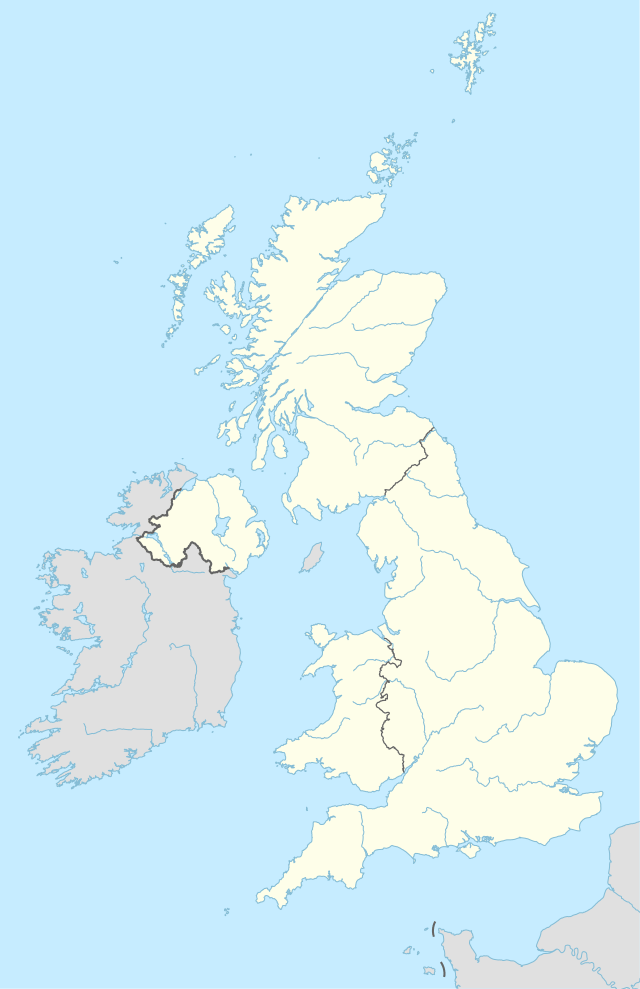Eastney
| Eastney | |
 Eastney |
|
| Unitary authority | Portsmouth |
|---|---|
| Shire county | Hampshire |
| Region | South East |
| Country | England |
| Sovereign state | United Kingdom |
| Post town | PORTSMOUTH |
| Postcode district | PO |
| Dialling code | 023 |
| Police | Hampshire |
| Fire | Hampshire |
| Ambulance | South Central |
| EU Parliament | South East England |
Coordinates: 50°47′00″N 1°03′00″W / 50.783333°N 1.05°W
Eastney is a district located in the south east corner of Portsmouth, England on Portsea Island. The actual electoral ward is called Eastney and Craneswater. At the 2011 Census the population of this ward was 13,591.[1]
History

Barracks and fortifications
Eastney Barracks, were built as headquarters for the Royal Marine Artillery, who moved in in 1867.[2] At the same time as the barracks, a pair of small artillery forts were built on the foreshore. Eastney Fort East is still extant (having remained in military use until 1989);[3] Eastney Fort West has been converted into a walled garden.
The small hamlet of Eastney and surrounding farmland were developed and absorbed into Portsmouth in the period 1890-1905, with a network of streets built to house Marines and their families which spread west from the barracks site. The streets were mostly named after famous military and naval engagements in which the Royal Marines had taken part. Perhaps unsurprisingly, there was and still remains a concentration of pubs in the area, one actually opposite the former barracks gate, named the Royal Marines Artillery Tavern (since removed the "s" from its name). Other pubs in the area include The Eastney Tavern, The Sirloin of Beef and The Three Marines.[4]
Due to the heavy bombing suffered by Portsmouth during the Second World War many displaced people found refuge along the north shore of Eastney Lake, living in makeshift houseboats, converted railway carriages and fisherman huts. Many of these homes lacked the basic amenities of electricity and plumbed water supplies. The community survived into the mid and late 1960s when the City Council finally began to relocate families to its newly built housing estates in Leigh Park and Paulsgrove.
Another claim to fame
Eastney was the first venue for a new game called Octopush invented by Alan Blake. Blake was a founder-member of the newly formed Southsea Sub-Aqua Club and he and other divers including John Ventham, Jack Willis, and Frank Lilleker first played this game in Eastney Swimming Pool in 1954. Octopush was originally created to keep new divers of the sub-aqua club both active and in attendance at the club over the colder, non-diving (and therefore boring) winter months. Originally called Octopush, and still known locally by that name in the United Kingdom today, the sport is now more widely known as Underwater Hockey. The original rules called for teams of eight players (hence "octo-"), a bat reminiscent of a tiny shuffleboard stick called a "pusher" (hence the "-push"), an uncoated lead puck called a "squid", and a goal known at first as a "cuttle" but soon thereafter a "gulley". Apart from 'pusher' and to a lesser extent 'Octopush' much of this original terminology is now consigned to history. 60 years on and Underwater hockey is now played around the world and competed at regional and national levels, and also at international levels with regular zone and world championships. Southsea Octopush Club maintains a high (often top) ranking within the UK, whilst Great Britain has mixed fortunes on the international stage.
Today
The area is also home to Eastney Beam Engine House,[5] as well as a council swimming pool, a camping and caravan site, and an estate of homes occupied my personnel of the UK Armed Forces and their families.
Eastney is also home to an unofficial naturist beach, which may be under threat from property development.[6]
References
- ↑ "Portsmouth ward population 2011".
- ↑ List of commandants, RM Museum
- ↑ local guide
- ↑ "Pubs Eastney Road". yelp.com. Retrieved 16 May 2015.
- ↑ "Eastney Beam Engine House". Portsmouth City Museums. Retrieved 28 May 2016.
- ↑ Eastney Naturists: Campaigning to save the Beach